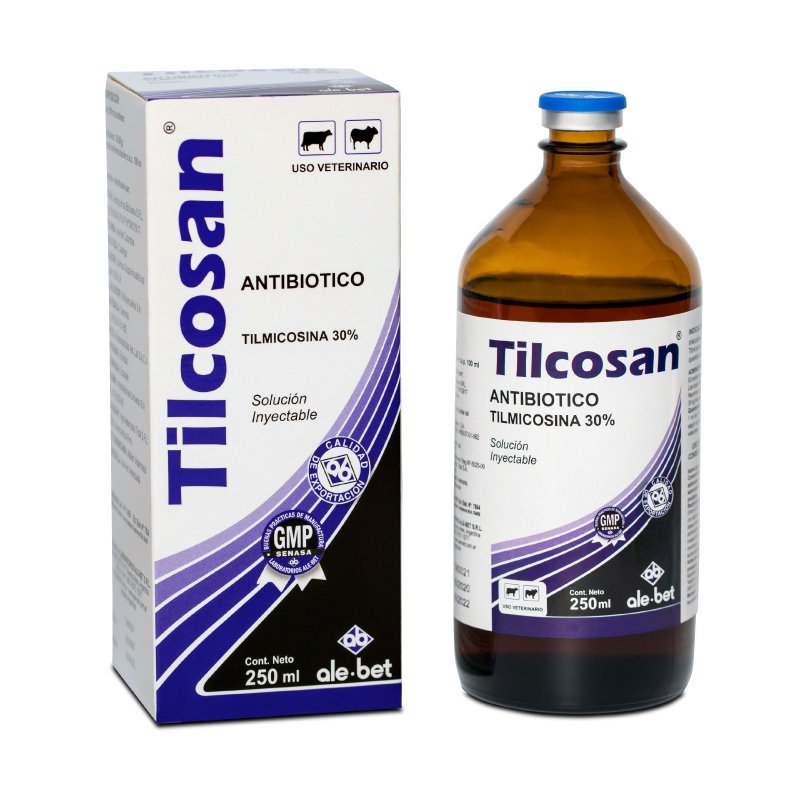
A single dose with all the potency and efficacy of a good antibiotic.
Every 100 ml of Tilcosan contains:
It is indicated for the treatment of respiratory diseases of young bovines (calves or stirks), as preventive treatment before transportation to avoid shipping fever caused by Mannhemia haemolytica (Pasteurella haemolytica) with a dose of 10 mg/kg by subcutaneous route, for the treatment of foot rot (infectious pododermatitis), of infectious bovine keratoconjunctivitis, of bovine mastitis in the dry period, with an intramammary administration at a dose of 10 ml per quarter.
Pneumonia: (10 mg/kg) 1 ml of TILCOSAN every 30 kg of weight.
Keratoconjunctivitis and foot rot: (5 to 10 mg/kg) 1 ml of Tilcosan every 30 to 60 kg of
weight, according to the severity of the case and veterinary judgement.
The treatment consists of a single application.
Bovines: by intramuscular or subcutaneous route.>
Equines, swine, ovines and caprines: by intramuscular route only.
Immediate, potent and effective action on keratoconjunctivitis, respiratory diseases and foot rot.
Antibiotic, bacteriostatic agent. TILCOSAN is a wide spectrum antibiotic (tilmicosin). It is a macrolide antibiotic, synthesized from tylosin, and developed for use in veterinary medicine only. It shows good activity against Gram-positive microorganisms, with significant activity against certain Gram-negative bacteria and mycoplasmas. Tilmicosin, like other macrolides, is a bacteriostatic agent, although at high doses it can act as a bactericidal agent. The pharmacokinetic profile is characterized by low plasma concentrations and high tissue concentrations. Being a weak base (phosphate), it concentrates in tissues with low pH (generally, tissues have a lower pH than plasma). Pathologically affected tissues (e.g., lung, mammary glands, foot rot) tend to lower their pH further, which creates an ideal environment for a higher concentration of tilmicosin in those affected tissues. Besides, tilmicosin has a strong penetration in macrophages, it is stored in lysosomes, and in this site, it affects the microorganisms that are phagocytosed; thus the synthesis of proteins being inhibited.